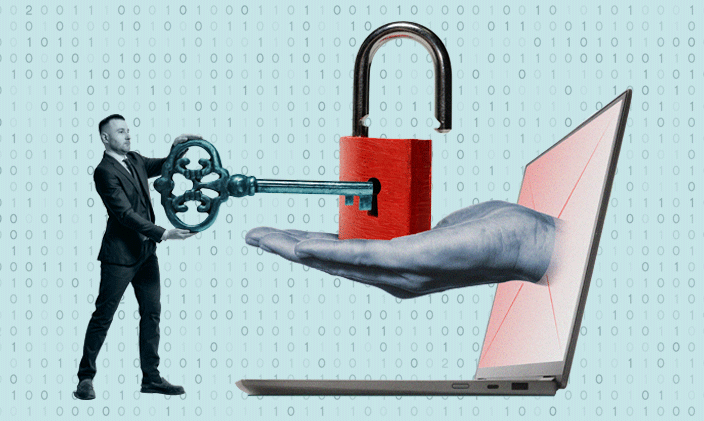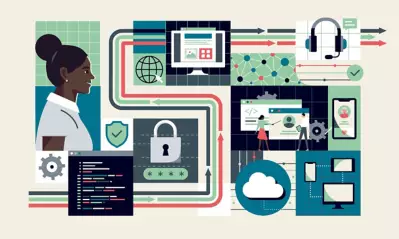Articles > Cybersecurity > What is ethical hacking?
What is ethical hacking?

Written by Michael Feder

Reviewed by Kathryn Uhles, MIS, MSP, Dean, College of Business and IT

Ethical hacking is a valuable first step for any company looking for insight into its network security. This practice helps satisfy several core cybersecurity priorities, from network defense to regulation compliance. Many companies depend on regular cybersecurity tests to audit their own information security strategies.
How organizations benefit from ethical hacking
Many companies depend on regular cybersecurity tests like ethical hacking to audit their own information security strategies.
Ethical hacking means receiving explicit permission to attempt to bypass a company’s networks through penetration testing, SQL injection and other means. The goal is to identify vulnerabilities or weaknesses in company systems as well as ways to better defend their servers, devices and data from cyberattacks.
Many companies depend on ethical hackers to secure their networks. A professional certification known as Certified Ethical Hacker (CEH) trains professionals in specific methods of keeping digital property safe from cyberattacks.
Organizations that conduct regular penetration testing of their in-house computer systems will be better protected from cybercriminals. They’ll achieve higher levels of security through regular tests on system networks that identify weaknesses and how to patch them. When security breaches do occur, companies trained in ethical hacking are also better prepared to respond.
Ethical hacking vs. malicious hacking
Ethical hacking occurs when companies give IT professionals permission to attempt a cyberattack as a way to test the defenses of their computer network. By contrast, malicious hacking occurs without company permission — often without any company knowledge. While a CEH is motivated to improve a company’s cybersecurity measures, malicious hackers exploit vulnerabilities for personal gain or financial reward.
While ethical hackers use a variety of techniques, they usually refrain from certain network attacks that may cause harm. Instead, a CEH attempts to breach company networks while doing as little damage to the system or users as possible. For example, they do not typically use forms of malware that can permanently damage computers or internal data.
Malicious hackers do not follow these guidelines. They are content to damage a network’s infrastructure while extracting valuable information. This means they often use aggressive malware, ransomware, phishing schemes, brute-force strategies and zero-day exploits to work their way into secure systems.
Types of hackers
Many different professionals conduct hacking. Despite their similar skill sets, they operate with varying philosophies. Some follow white hat protocols, using their skills to help companies identify and patch system vulnerabilities. Others maliciously attack networks to access and sell the information. Still others are considered “gray hat” — alternating between malicious and ethical hacking practices.
White hat hackers
White hat hackers use their skills for good, helping companies identify and understand where their systems could use IT improvement. They operate strictly within the law and only exploit a company’s systems with explicit permission.
Certified ethical hackers and penetration testers are synonymous with white hat hackers. Though they’ll use techniques to execute data breaches — including penetration testing, vulnerability assessments and social engineering — they don’t seek personal gain from these actions. Instead, they work to help companies fortify their networks before malicious actors can get in.
Black hat hackers
Black hat hackers deliberately operate outside of the law. They use unethical data exploitation techniques to illegally access a company’s networks, devices and data. Once inside a company’s network, they often take information hostage until a fee is paid. In other cases, they steal personal information and deliberately disrupt the network’s infrastructure.
Many black hat hackers operate in teams. They populate online forums or underground marketplaces, where they steal and sell personal data for high prices.
Gray hat hackers
Sometimes gray hat hackers operate inside of the law, even sharing information on hacking techniques with companies looking to fortify network security. In other cases, they operate illegally — using illicit hacking practices or exploiting networks without permission.
Gray hat hacking blends white hat and black hat strategies. They maliciously hack systems, using newfound network access to explore data and applications. However, they may also focus on warning companies about security vulnerabilities.
The role of certified ethical hackers
Ethical hackers are critically important in protecting network safety. Particularly for companies with sensitive digital information, ethical hackers help identify and eliminate vulnerabilities before malicious hackers get the chance.
Collaboration is key — ethical hackers work directly with business and IT leaders, first diagnosing any problems with network structure or integrity. They perform various exploits — attempts to enter a network without legitimate passkeys.
After the active attack phase, they provide full reports to company stakeholders. These reports identify any successful exploits, along with opportunities for immediate and long-lasting network improvement.
It’s also important that company employees understand how to protect themselves against hacking. A CEH may often teach these skills, instructing employees on appropriate responses if they suspect malicious activity. This might include lessons or seminars on security best practices like multifactor authentication and data backup.
Common ethical hacking techniques
Ethical hacking is a complicated, multistep process — one that involves recurring attempts to breach a network without proper access. Hackers use several common techniques to achieve their goals, including:
- Vulnerability assessments: Evaluation of company networks, devices, users and data to identify possible system weaknesses. Methods include looking for vulnerabilities like outdated passwords, old software or unprotected web applications.
- Penetration testing: Simulated attacks on company systems to identify weaknesses hackers might exploit.
- Session hijacking: An attacker gains unauthorized access to a user’s session ID either by stealing their session cookie or convincing them to click a malicious link that contains a predicted session ID.
- Social engineering: Strategies that manipulate people to gain network access without any physical hacking. For example, social engineering might occur when a hacker calls an HR department pretending to be a legitimate employee asking for information.
- Wireless network hacking: Gaining access to wireless networks, often in the cloud, through weaknesses in controls, configurations or Wi-Fi.
In some situations, a CEH may also depend on physical security techniques. These strategies help identify any vulnerabilities in physical security resources, like locks, security guards and video surveillance systems.
Five phases of ethical hacking
Most ethical hacking takes place in five stages. Let’s break down each stage, and how hackers go about the process.
1. Reconnaissance
During the reconnaissance stage, hackers gather as much information and data as possible in a particular network. Hackers also spend time auditing security and identifying potential entry points to scan in the next step.
The information hackers gather depends on the network itself. For example, ethical hackers might come across details like IP addresses, email addresses, databases or webpage links.
2. Scanning
Using information gathered during reconnaissance, ethical hackers directly scan systems for weaknesses. This means focusing on specific areas of a network that might be particularly vulnerable to hacking attempts. It might also mean scanning specific applications connected to company networks that could serve as a viable point of entry.
Network mapping is a major priority during the scanning stage. This occurs when hackers map a network in terms of range, hosts and associated devices. This helps hackers achieve a much better understanding of a company’s network infrastructure, as well as the access permissions they might find inside.
3. Gaining access
Insight becomes action in this third stage, as ethical hackers attempt to exploit vulnerabilities they’ve identified. They might use techniques in code injection, buffer overflow or authentication bypass to gain unauthorized access to specific ports or files. Hackers might use social engineering techniques if they identify weaknesses in a company’s workforce.
Once they gain access to a network, ethical hackers attempt to widen their scope of visibility. Where malicious hackers would begin to steal information or install malware, ethical hackers only document their findings. They record specific steps that explain how they broke into the network.
4. Maintaining access
After obtaining access to a network, ethical hackers work to maintain it. This stage mimics a malicious hacker’s attempts to hold a network open long enough to take control of the system. That process typically involves rootkits and malicious software that more easily enables unauthorized access to a particular system or network.
If an ethical hacker is actively working against a company’s IT team to hack a network, they often practice persistence — techniques to reestablish network access after it is cut off. They might also simulate a backdoor attack that establishes consistent network access even if the original entry point is patched.
5. Covering tracks
Many ethical hackers will further simulate a real-world attack by “covering their tracks” after the hack has concluded. This means hiding evidence that an attack took place. Hackers might modify registry values, revise log files or delete data that suggests illicit network entry.
A first step in hiding hack evidence is revising event logs. Event logs typically record major actions within a specific network, from user login times to file access. Malicious hackers may try to clear these logs to avoid raising suspicion within the organization they just hacked. Ethical hackers follow suit, attempting to erase this evidence before presenting a report to the hiring company.
Ethical hacking tools and resources
Certified ethical hackers use a variety of tools to help save time when scanning networks, identifying vulnerabilities or performing actual exploits.
Here are some of the most popular resources:
- Metasploit: An open-source tool that helps hackers introduce custom code into a network for testing and potential exploitation.
- Nmap: An open-source tool, short for Network Mapper, that helps scan systems and perform network inventory tasks before proceeding with any exploitation.
- Nessus: A remote security tool that scans devices for vulnerabilities, one port at a time.
- Acunetix: A dynamic hacking tool that automatically scans for more than 4,500 common vulnerabilities across scanned web applications.
Ethical hackers often use a combination of tools for a single hack, depending on their objectives. Together, these tools help accomplish all five stages of an ethical hack — from reconnaissance through network exit and reporting.
Challenges faced by ethical hackers
Ethical hackers face a unique set of challenges each day at work, particularly in staying up to date with techniques.
It’s their job to simulate a malicious attack. To do so, they must stay updated on the latest malware, phishing and hacking trends. They also need to regularly update their tools and their own skills in cybersecurity as hacking practices evolve.
Legal and ethical considerations
An ethical hacker can also face challenges in maintaining compliance. Unlike other professionals, they attempt to emulate illegal activities. Even as they attempt to breach a company’s networks, they can only perform activities that follow legal guidelines.
Ethical hackers need explicit permission from a company before breaching their systems. Without that permission, hackers’ actions are considered malicious — subject to criminal charges under the Computer Fraud and Abuse Act.
They should follow responsible disclosure practices. This means fully revealing all security vulnerabilities after examining a company’s security. It also means allowing that company sufficient time to fix vulnerabilities before making information public.
How to become an ethical hacker
There’s really no such thing as an entry-level ethical hacker. Many work toward becoming job-ready professionals by gaining experience in related information security and cloud computing roles.
For example, some cybersecurity analysts eventually grow into roles where they do penetration tests and other vulnerability-management tasks. Experienced software developers may pursue ethical hacker roles after developing overlapping information technology skills in programming, web compliance and application architecture.
Education and training for ethical hackers
Becoming an ethical hacker involves a combination of education and hands-on experience.
Many students begin their journey in the field of ethical hacking with a computer science, cybersecurity or technology degree. These programs teach important skills in cybersecurity, IT, data science and related subjects.
Many pursue education in cyber and network defense to reinforce skills like network analysis and risk management. Graduates can further strengthen their knowledge with a certificate in digital forensics, learning even more about network traffic and threat reporting.
Skills ethical hackers need
Here are some of the skills responsibilities of an ethical hacker:
- Conducting vulnerability assessments that identify a wide range of network weaknesses.
- Penetration testing to identify if it’s possible to breach a company’s systems, including its networks and data.
- Explaining to companies how and why their networks are vulnerable to external cybersecurity threats.
- Educating company employees on how they can guard against cyberattacks.
The exact tasks of an ethical hacker depend on the employer’s needs. For example, some ethical hackers spend more time assessing networks for threats. Others serve more of an educational role in helping employees take personal responsibility for data and network safety.
Learn more about cybersecurity skills like ethical hacking
Whether you’re seeking a basic understanding of cybersecurity or you’re a working professional looking to learn more skills like ethical hacking, University of Phoenix offers IT and computer science programs, including an associate degree in information technology, an advanced cybersecurity certificate, a bachelor’s degree in information technology, a bachelor’s in cybersecurity, and a master’s degree in cybersecurity.
Contact University of Phoenix for more information.

ABOUT THE AUTHOR
A graduate of Johns Hopkins University and its Writing Seminars program and winner of the Stephen A. Dixon Literary Prize, Michael Feder brings an eye for detail and a passion for research to every article he writes. His academic and professional background includes experience in marketing, content development, script writing and SEO. Today, he works as a multimedia specialist at University of Phoenix where he covers a variety of topics ranging from healthcare to IT.

ABOUT THE REVIEWER
Currently Dean of the College of Business and Information Technology, Kathryn Uhles has served University of Phoenix in a variety of roles since 2006. Prior to joining University of Phoenix, Kathryn taught fifth grade to underprivileged youth in Phoenix.
This article has been vetted by University of Phoenix's editorial advisory committee.
Read more about our editorial process.
Get your free IT Program Guide
Learn how 100% of our IT degree and certificate programs align with career-relevant skills.
Get your free IT program guide. Please enter your first and last name.
Thank you
Download your pdf guide now. Or access the link in our email.


